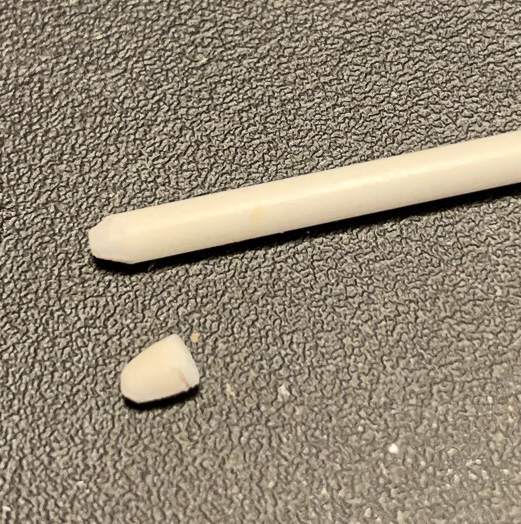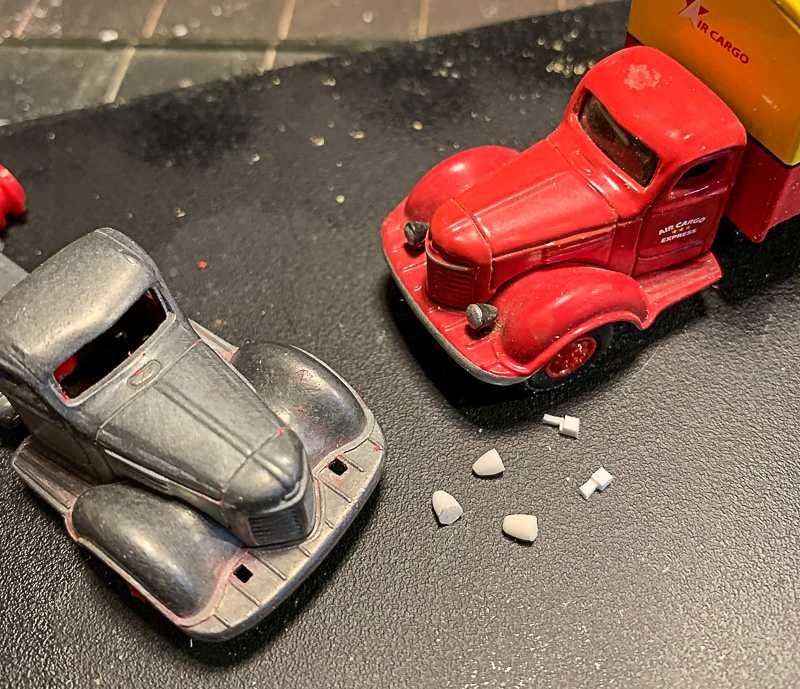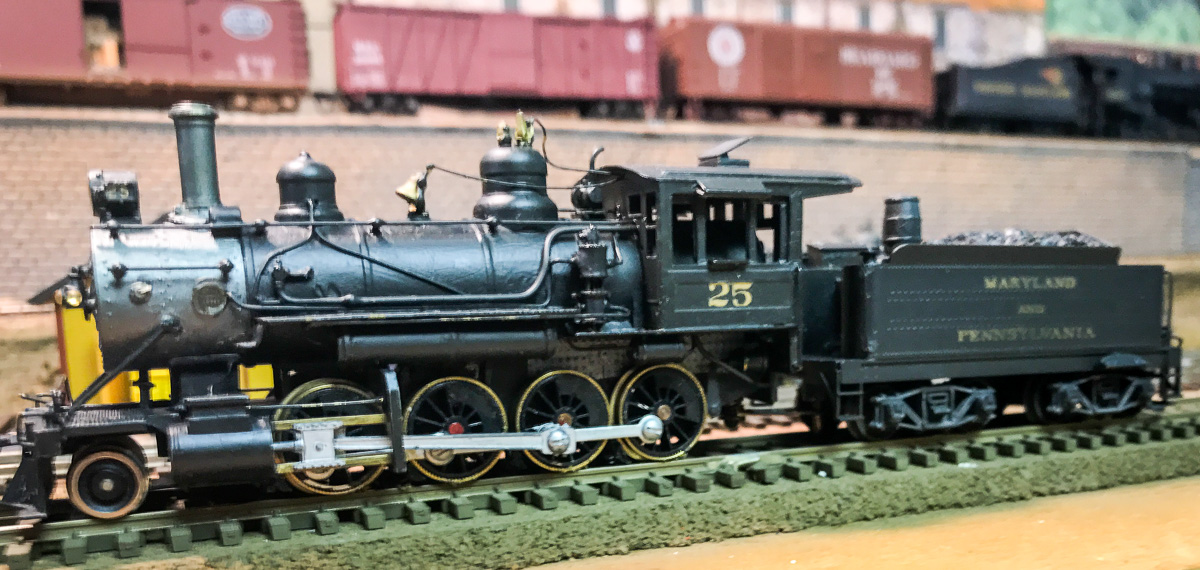Real Men Don’t Read NMRA’s Recommended Practices
From Jay Beckham
In 2000 I changed from HO to O scale. In HO a 36-inch minimum radius was a nice-looking curve. I figured that 50-inch would be fine for O scale, particularly since I was modeling the South Shore which was an interurban line. I also did not consider that if I found a Little Joe it would require a larger radius because of its two eight-wheel trucks. But real men don’t read NMRA’s Recommended Practices (RP).
Now, jump forward 20 years to modeling the PRR’s Northern Central branch from Baltimore to Harrisburg, and the recent purchase of two PRR EMD E8 units. These engines have all-wheel pick-ups and are close-coupled. They run poorly on my curves. Then I added some 80-foot passenger cars, and the derailing began. My disregard for radius had come back to bite me.
According to the NMRA Recommended Practices, six-wheel trucks and 80-foot cars require a 58-inch minimum radius. Due to existing constraints, I am compromising with a 60-inch minimum. The RP also recommends a #6 switch. I have dozens of Atlas #5s. Fortunately, when I built the Penn Station area, I had laid large radius curves. I did the same at the site of my northbound staging representing the New York area.






There are many more areas on the layout that may require radius corrections. They will be addressed in the coming months. I plan to build #6 switches using Fast Tracks and replace all my Atlas #5 switches. The nickel-silver plating is wearing off most of those switches anyway, and a #5 is below the recommended practices. In addition, the frogs are very difficult to solder leads to for powering.
So, what have I learned in this process? Standards and recommended practices have a purpose. My advice is to do your homework. Pay attention to what others say and have experienced. You may be able to apply their methods to your work.
After building a large layout I feel I could write a book about things to do and not to do.
Consider layout height so you can sit underneath to work on switches and wiring. Consider sectional construction so you can move without destroying years of work. Keep detailed spreadsheets of everything on the layout for the sake of your heirs. I feel I could go on and on.
Photos by Jay Beckham and Wilbur Snyder


 From
From 
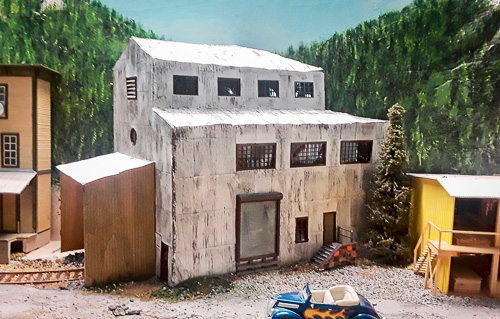
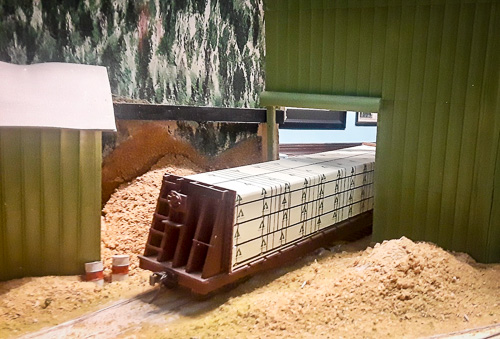
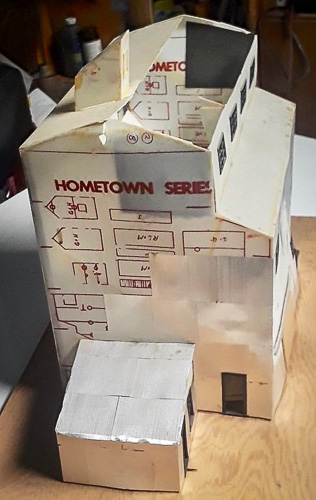 Rummaging through my stuff, I came across a Broadway Limited Cannery kit. I had three of these at one time since they are very flexible. The kit has material to build a factory with corrugated sides and roof, using plenty of heavy styrene sheets, factory windows, and aluminum corrugated siding strips.
Rummaging through my stuff, I came across a Broadway Limited Cannery kit. I had three of these at one time since they are very flexible. The kit has material to build a factory with corrugated sides and roof, using plenty of heavy styrene sheets, factory windows, and aluminum corrugated siding strips.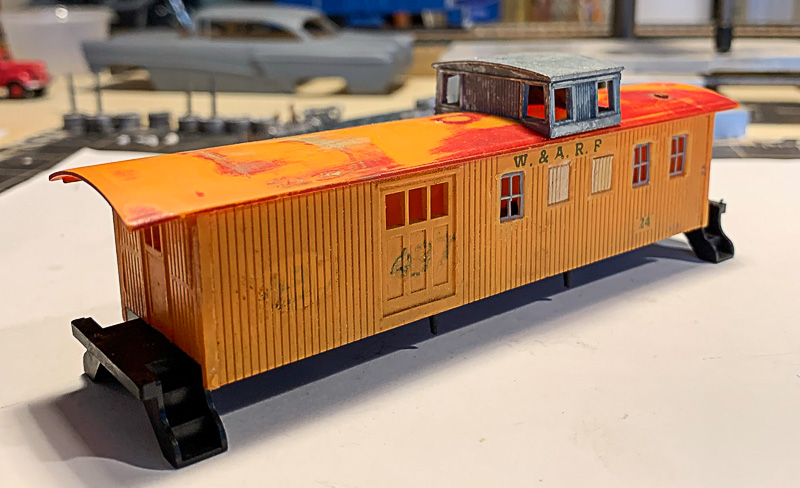 Of the many facets of this hobby that I enjoy, one is the resurrecting of old models. “Flea Market Finds” if you will. This old 1880’s Mantua combine could have been had for perhaps 50 cents, if it wasn’t in the freebie box. It had a missing truck and the truss rods, made of steel wire for some reason, were badly rusted. The model probably dates to the 1950s and was intended to accompany Mantua’s “General ” 4-4-0 locomotive kit. I recall purchasing one of those kits at Polk’s Hobbies in Manhattan in the early ’70s for $15. Does anyone remember Polk’s? They later produced their own line of hobby goods under the Aristo-Craft name (if memory serves). The store itself offered five floors of hobby goods. Each floor was devoted to a particular specialty (plastic models, model railroading, R/C, etc).
Of the many facets of this hobby that I enjoy, one is the resurrecting of old models. “Flea Market Finds” if you will. This old 1880’s Mantua combine could have been had for perhaps 50 cents, if it wasn’t in the freebie box. It had a missing truck and the truss rods, made of steel wire for some reason, were badly rusted. The model probably dates to the 1950s and was intended to accompany Mantua’s “General ” 4-4-0 locomotive kit. I recall purchasing one of those kits at Polk’s Hobbies in Manhattan in the early ’70s for $15. Does anyone remember Polk’s? They later produced their own line of hobby goods under the Aristo-Craft name (if memory serves). The store itself offered five floors of hobby goods. Each floor was devoted to a particular specialty (plastic models, model railroading, R/C, etc).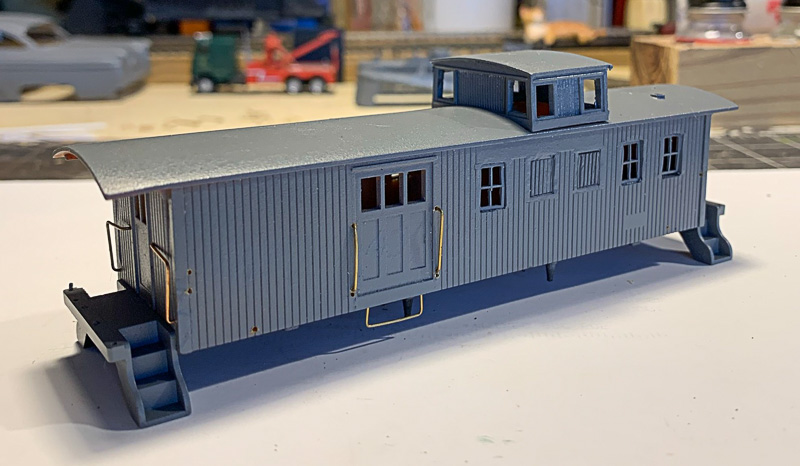 Prototype railroads often repurposed old rolling stock so I decided to do the same with this old combine. As it is now, the car is ready for detailing. The rusty truss rods have been removed, the cupola is in place, the windows beneath plugged and the grab irons are slowly being installed. Much tedious drilling ahead.
Prototype railroads often repurposed old rolling stock so I decided to do the same with this old combine. As it is now, the car is ready for detailing. The rusty truss rods have been removed, the cupola is in place, the windows beneath plugged and the grab irons are slowly being installed. Much tedious drilling ahead.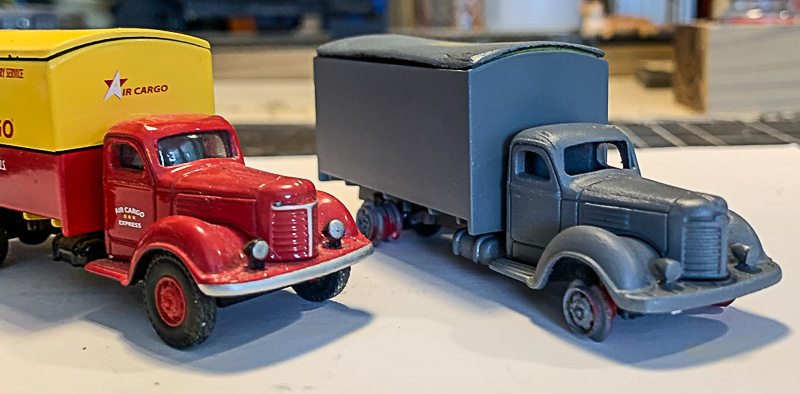 Also on my bench are this pair of
Also on my bench are this pair of 